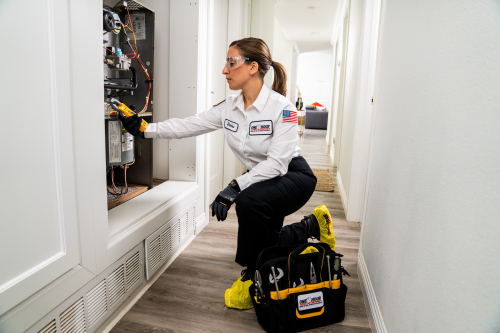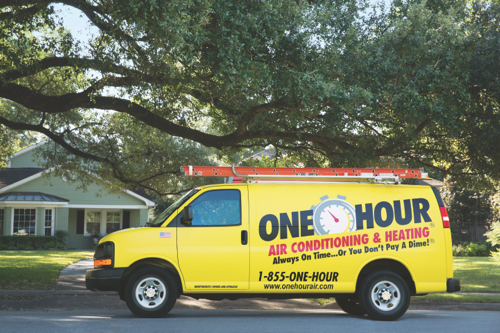Why Ignoring Your Broken Heater Could Be a Bigger Problem Than You  Think
Think
A heater is one of those home essentials we often take for granted until it stops working. When your heater starts showing signs of trouble, it’s tempting to delay repairs or replacement, whether to save time or manage expenses.
However, letting a faulty heater linger in your home comes with a laundry list of risks you don’t want to ignore. From safety concerns to skyrocketing utility bills, the cost of postponing action can often outweigh the investment of addressing the issue upfront.
This guide explores the potential risks of neglecting a failing heater in your home and offers practical insights into why acting sooner rather than later can save more than just money.
Safety Risks
Fire Hazards
A malfunctioning heater can easily become a fire hazard. Damaged wiring, overheating components, or faulty electrical connections can spark a fire, putting your home and family in danger. For instance, space heaters account for a significant number of home fires every year. If your central heating system is showing signs of wear such as strange noises, burning smells, or malfunctioning parts it’s critical to take these signs seriously.
Carbon Monoxide Leaks
Gas-powered heaters pose another serious safety risk when not properly maintained. A cracked heat exchanger, for example, can lead to carbon monoxide leaks. This odorless, colorless gas can cause significant health issues or even be fatal in high concentrations. Remember, a carbon monoxide detector is essential, but it’s not a substitute for timely maintenance or replacement of a heater that’s past its prime.
Injury Risks from Malfunction
Faulty heaters can act unpredictably, leading to sudden bursts of hot air or uneven heating. This irregular behavior might put you at risk of burns or even scalding, particularly if you have children or elderly family members at home.
Increased Energy Costs
An inefficient heater is a utility bill’s worst nightmare. Faulty heaters often work overtime to provide the same level of heating, consuming far more energy than necessary. For example, if your heater’s components are deteriorating, the system will need to run longer cycles to deliver consistent warmth. This results in inflated energy bills that could have been avoided with properly functioning equipment.
Replacing a faulty heater proactively often leads to better energy efficiency, which means not just lower bills but also a reduced environmental footprint a win-win for your wallet and the planet.
Poor Indoor Air Quality
A faulty heating system can have a significant impact on the air you breathe. Dust, mold, or debris trapped in an old or malfunctioning heater can circulate through your home, exacerbating allergies or respiratory issues. This can become particularly problematic for households with young children, seniors, or anyone with pre-existing health conditions like asthma.
Besides contamination, humidity levels can also be affected. Older systems often struggle to manage moisture in the air, leading to dry conditions that irritate the skin, eyes, and throat. A properly functioning system maintains a healthier and more comfortable environment for everyone at home.
The Snowball Effect of Neglect
One problem can easily lead to another. A faulty heater doesn’t exist in isolation it’s part of your home’s larger ecosystem. Ignoring an issue can strain connected systems, leading to further wear and tear on HVAC components like ductwork,
thermostats, or even your electrical system. This creates a domino effect where a small, fixable problem escalates into something that’s far more costly and time-consuming to handle.
For instance, if a heater isn’t working properly and your home doesn’t stay warm enough, pipes might start to freeze during the winter. A burst pipe can cause extensive water damage, turning a heater issue into a plumbing nightmare.
Compromised Comfort and Productivity
When your heater doesn’t work as it should, every corner of your life feels the impact. Imagine waking up to a freezing home or struggling to focus during a remote work day because your space isn’t warm enough to feel comfortable. This goes beyond mere inconvenience your well-being and productivity are directly linked to your home’s environment. Over time, a faulty heater disrupts daily routines, leaving you more fatigued, distracted, and stressed.
Shortened System Lifespan
Neglecting small fixes or continuing to use a heater past its intended lifespan can quickly wear it out further, sometimes to the point that repairs aren’t even an option. This leaves little choice but premature replacement and often at a higher cost. Think of it like driving a car with worn-out brakes; each trip only compounds the damage. Regular maintenance and timely replacement can ensure the longevity of your heating system.
When to Replace Your Heater
Wondering how to tell if your heater’s time is up? Here are some clear signs it’s time to call a professional:
- Your system is more than 15 years old.
- You notice uneven heating across your home.
- Your energy bills have spiked with no clear explanation.
- The unit requires frequent repairs in short intervals.
- Strange odors or noises persist while the heater runs.
- Your heater cycles on and off irregularly, struggling to maintain temperature.
If you’re facing any of these issues, don’t delay scheduling an inspection. Acting quickly can save you from the risks outlined above.
What You Can Do Today
If you suspect a problem but aren’t ready for a full replacement, schedule an inspection for your heating system this season. Preventive maintenance can catch minor issues before they become major ones. Additionally, consider enhancements like programmable thermostats to improve control and efficiency.
For those ready to upgrade, explore energy-efficient options such as heat pumps or furnaces with high annual fuel utilization efficiency (AFUE) ratings. Many manufacturers now offer advanced models that consume less energy, operate more quietly, and boast superior safety features compared to systems developed a decade ago.
Final Thoughts
The risks of neglecting a faulty heater are far-reaching, from safety hazards to financial strain. Addressing problems proactively, either through repairs or replacement, is an investment in more than comfort—it’s about protecting your home, family, and budget.
Don’t put off what can make a world of difference to your winter warmth and peace of mind. Connect with a trusted HVAC professional today and take the first step toward a safer, cozier living space.
